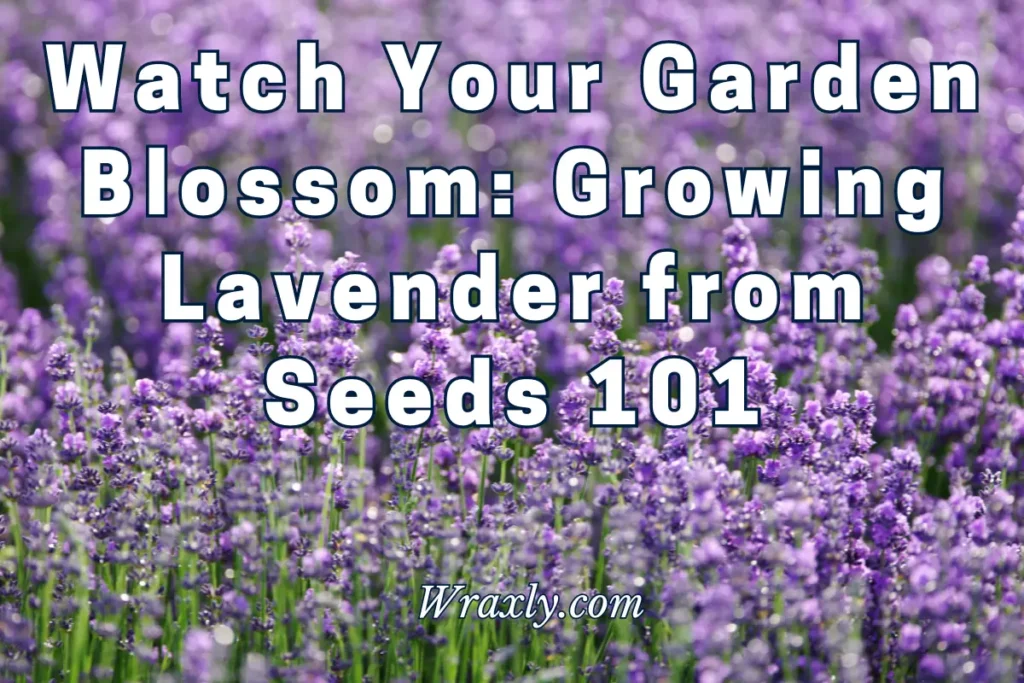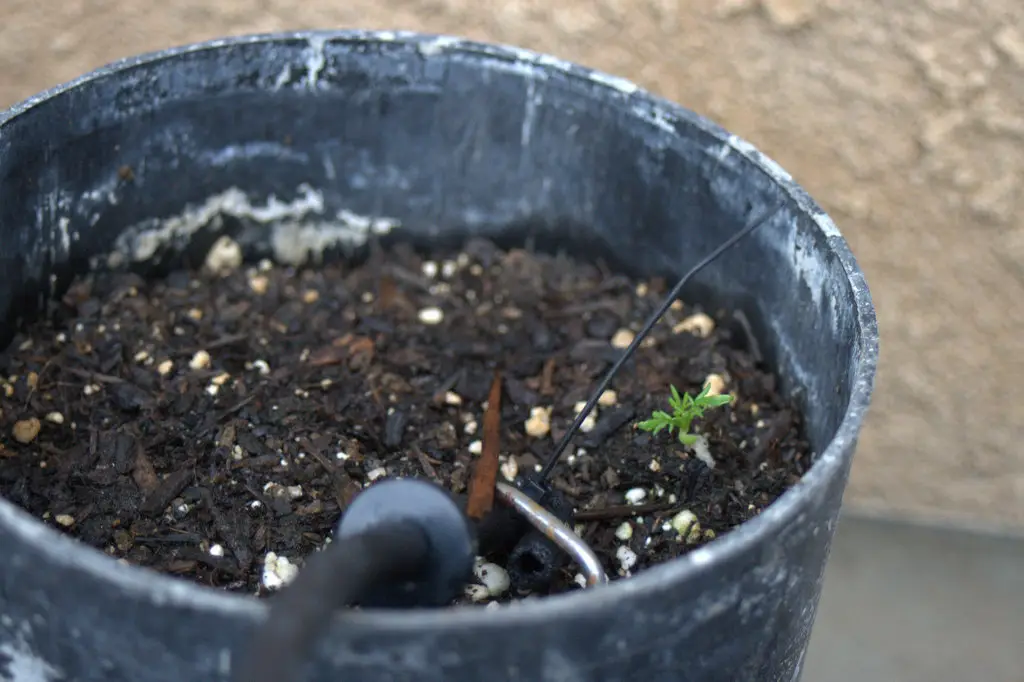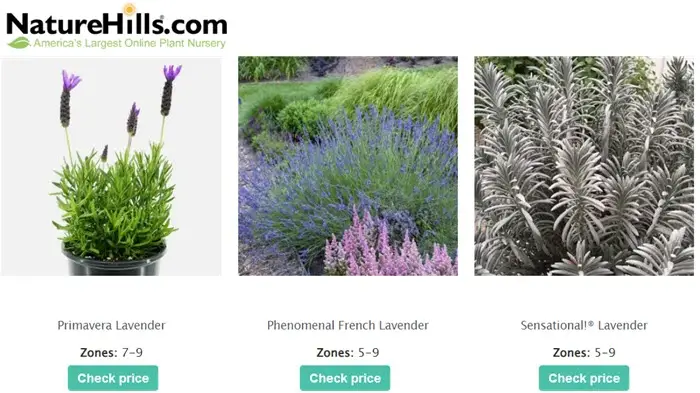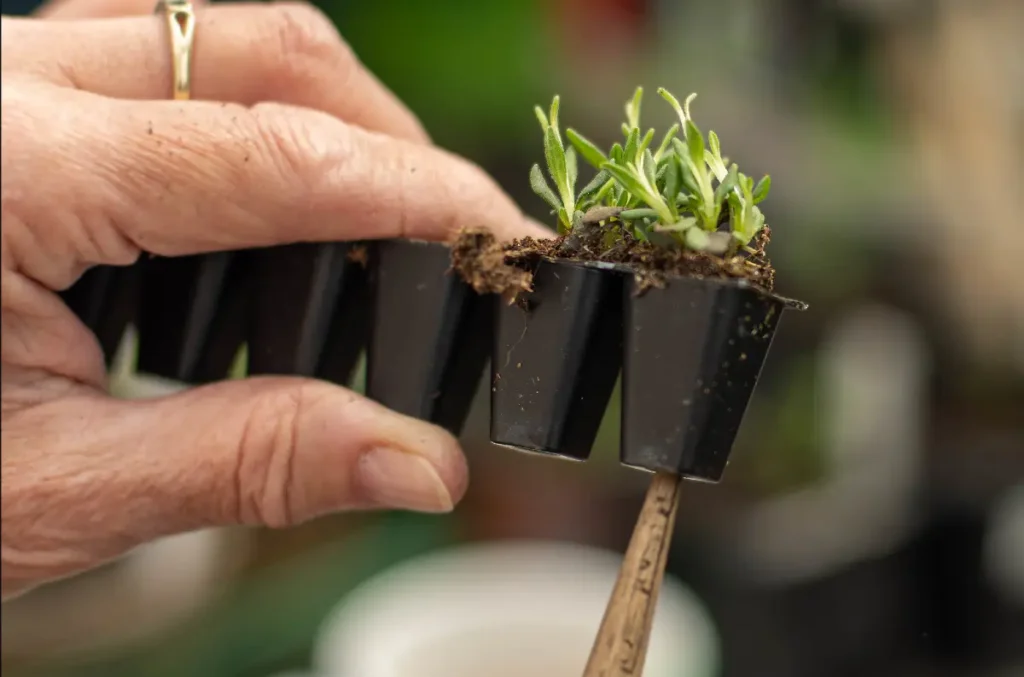Growing lavender from seeds can be a rewarding yet challenging endeavor, especially for those new to gardening. Lavender, known for its fragrant flowers and versatile uses, is a valuable addition to any garden.
In this guide, I will tell you how to grow lavender from seeds, along with sharing some valuable hacks and tips to ease the process. Let’s dive in!

Types of Lavender Seeds
Lavender seeds come in various types, each with its unique characteristics and growing requirements. The main types include English, Spanish, and French lavender, with several hybrids also available, offering a range of options for gardeners.
- English Lavender: Known for its sweet fragrance, it is often used in sachets and culinary applications.
- Spanish Lavender: Recognizable by its rabbit-ear-shaped petals, it is primarily grown for ornamental purposes.
- French Lavender: Valued for its long-lasting blooms and strong scent, it is a popular choice for potpourris and floral arrangements.
- Hybrids: These combine traits from different species, potentially offering improved resilience, fragrance, or bloom duration.
Choosing the Right Method
Lavender seeds can either be propagated indoors or directly sown into the garden. Starting indoors is often the preferred method as it allows for a controlled environment, ensuring a more consistent germination rate. This controlled setting is crucial as lavender seeds can be quite finicky, taking a long time to germinate and tending to sprout unevenly.

Direct sowing is another option, but it requires meticulous attention to timing and environmental conditions. Lavender seeds are also excellent candidates for winter sowing due to their requirement for cold stratification, a process where seeds are exposed to a cold and moist environment to break dormancy and encourage germination.
This method can be particularly beneficial for those living in regions experiencing freezing winter temperatures, aligning the natural weather conditions with the seeds’ intrinsic needs.
Recommended Seed Starter Kits
| Image | Titre | Prime | Acheter |
|---|---|---|---|
Haut Haut
Haut | AQUEENLY Lot de 10 plateaux de démarrage pour graines avec dômes de réglage de l'humidité et plateaux de culture de base | PrimeAdmissible | Vérifier le prix sur Amazon |
 Haut
Haut | Gardzen Lot de 5 propagateurs de jardin avec 200 cellules, plateau de démarrage de graines avec dôme et base 38,1 x 22,9 cm (40 cellules par plateau) | PrimeAdmissible | Vérifier le prix sur Amazon |
 Haut
Haut | Kit de démarrage de semences de jardin de fenêtre – Fournitures complètes – 3 mini plateaux de serre avec dôme s'adaptant au rebord de fenêtre, dosettes de sol en fibre. Jardinage intérieur/extérieur. Cultivez des herbes, des fleurs et des légumes. | PrimeAdmissible | Vérifier le prix sur Amazon |
 Haut
Haut | Delxo Lot de 10 plateaux de démarrage pour semis (12 cellules par plateau) Kit de germination des plantes à humidité réglable Plateau de démarrage pour graines de jardin avec dôme et base verte et étiquettes pour plantes Kit d'outils manuels | PrimeAdmissible | Vérifier le prix sur Amazon |
Seed to Harvest Timeline
When grown from seed, lavender plants take their time to reach their full potential. In the first year, the plants may flower lightly, offering a glimpse of the aromatic bounty to come, with possibly a few buds making their appearance.
By the second season, the plants should come into full bloom, presenting a profusion of fragrant flowers for gardeners to enjoy. This gradual progression underscores the importance of patience and diligent care in cultivating lavender.

Planting Lavender Seeds
Start by determining the optimal time to plant, usually 10-12 weeks before the average last frost date if starting indoors. Preparing the seeds is crucial; lavender seeds benefit from cold stratification, a process that involves placing them in moist soil and refrigerating them for 3-6 weeks before planting.
Supplies Needed:
- Seeds
- Seed trays with lids
- Seed starting soil or peat pellets
- Truelle à main
- Eau
- Grow light (recommended)
- Soil thermometer (optional)
Planting Steps:
- Prepare the Soil: Use moistened pellets or fill seed trays with soil mix.
- Semez les graines : Plant 2-3 seeds per hole or pellet, lightly covering them with soil, no more than 1/8″ deep.
- Arrosage : Maintain evenly moist soil, watering from the bottom to avoid displacing seeds.
- Cover the Trays: Use plastic dome lids to retain soil moisture during germination.
- Provide Light: Place trays in a bright location or use grow lights, ensuring the seeds receive ample light for germination.
- Monitor Temperature: Maintain soil temperature between 60-65°F for optimal germination.
Lavender Germination Time
Lavender seeds are notorious for their slow and uneven germination. Some seeds may sprout within 2-3 weeks, while others may take a month or more. This variability in germination times requires gardeners to exercise patience and provide consistent care to ensure the successful growth of all seeds.
It is normal for some seeds to be quick sprouters and others to be slow pokes, so maintaining an optimal growing environment and regular monitoring is crucial during this phase.
Caring for Lavender Seedlings
The first two leaves that appear post-germination are the “seed leaves,” which are slightly oval and rounded at the ends. Subsequent growths are the “true leaves,” resembling miniature lavender leaves, a clear indicator of healthy progress. Here are some aftercare tips:

- Lumière: Lavender seedlings can become leggy quickly, necessitating a grow light maintained 1-2” above them at all times. A sunny window is usually insufficient to prevent legginess.
- Eau: Maintaining evenly moist soil is crucial. Overwatering leading to soggy soil should be avoided to prevent root rot.
- Fertilisation: Lavender thrives in nutrient-poor soil; hence, fertilization is usually unnecessary and can even be detrimental, causing stunted growth among other issues.
Transplanting Lavender Seedlings
Transplanting is a critical phase in the life cycle of lavender. It’s pivotal to wait until the seedlings are 2-3” tall and the last frost has passed. Acclimating them to outdoor conditions is vital; a sudden change in environment can be detrimental to their survival.
Gradually introduce the seedlings to outdoor conditions to ensure they adapt well to the new environment. Once acclimated, plant the seedlings in a location with full sun and well-drained soil, spacing them adequately to allow for growth.
FAQ
Growing lavender from seeds often raises numerous questions. Here are some frequently asked questions to help you out further:
Several factors can inhibit germination, including overly warm or wet soil, inadequate light, or old, non-viable seeds. Maintaining soil temperature between 60-65°F and consistent moisture levels can enhance germination rates.
While not absolutely required, stratification, or exposing seeds to a period of cold, can significantly improve germination rates and is highly recommended for lavender seeds.
Lavender seeds require light to germinate; hence, a light covering of soil, no more than 1/8” deep, is ideal.

Additional Tips
Here are some additional tips and insights to ensure the healthy growth of your lavender plants.
- Arrosage : Lavender plants may need watering during the growing season, especially when the soil is dry about 5 cm below the surface. Watering should be done deeply in the early morning or late afternoon to avoid fungal diseases. See: How Often to water Lavender? Tips to Keep Lavender Beautiful
- Fertilisation: In poor soil, applying a balanced fertilizer can be beneficial, but over-fertilization should be avoided.
- Pruning and Deadheading: Regular removal of fading or dead flowers will encourage more flowering. After the flowering season, pruning helps in maintaining the shape and encourages new growth.
- Harvesting Lavender: Harvesting lavender is a delightful culmination of the meticulous care and patience invested in growing it. The optimal time to harvest lavender is just before the flowers open, ensuring the preservation of the aromatic oils.
- When to Harvest: Lavender buds are ready to harvest just before the flowers open. The stems should be cut just above a set of leaves. Use sharp scissors or snips to cut the stems. After cutting, remove leaves from the stems, tie the stems together with string, and hang them upside down in a warm, dry place until the buds feel dry.
- Storing Lavender Buds: Once dried, store the lavender buds in an airtight container to preserve their fragrance and prevent moisture from spoiling them.
- Using Harvested Lavender: Lavender buds can be used in a variety of ways, including making sachets, teas, or even as a culinary herb, adding a unique flavor to dishes.
Pour plus de lecture
- La lavande espagnole dévoilée : un guide complet de culture et d'entretien
- La lavande repousse-t-elle chaque année ?
- Sauge russe contre lavande
- Discover the Top Lavender Companion Plants
Final Thought on Lavender Seeds
Growing lavender from seeds is a journey filled with learning, anticipation, and the sweet reward of fragrant blooms. Experimenting with different lavender varieties can bring diverse fragrances and colors to your garden, and each type has its unique charm and uses.
Whether you are a beginner or an experienced gardener, growing lavender offers a rich, sensory-filled experience and the opportunity to deepen your connection with the natural world. So, embrace the challenges, enjoy the process, and relish the aromatic rewards of your lavender-growing journey.

Darrell a une passion pour le jardinage qu'il a héritée de son père. Aller ici pour en savoir plus sur l'influence que son père a joué dans son amour pour le jardinage. Si vous souhaitez envoyer un message rapide à Darrell, rendez-vous sur sa page de contact ici.

![Comment arroser les plantes d'intérieur [Plant Care 101]](https://wraxly.com/wp-content/uploads/2021/03/How-to-Water-Indoor-Plants-Plant-Care-101-1200-1024x576.webp)

![Cultiver des plantes à partir de boutures [Un guide simple]](https://wraxly.com/wp-content/uploads/2021/03/Growing-Plants-from-Cuttings-A-Simple-Guide-1200-1024x576.webp)